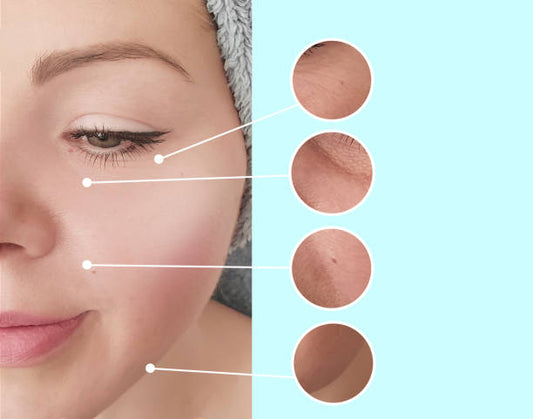Do you suffer from a persistent red and scaly rash on your face, scalp, chest, or other areas of your body? If so, you may be dealing with seborrheic eczema, a common skin condition that affects millions of people worldwide.

Seborrheic eczema is a chronic skin condition that causes red, scaly, and itchy patches to appear on the face, scalp, chest, and other parts of the body. The condition is often characterized by greasy, yellowish scales on the affected areas of skin. Seborrheic eczema is not contagious and is not caused by any known infectious agent.
Seborrheic eczema can be managed and treated with the right combination of lifestyle changes and medical treatments. Common treatments for seborrheic eczema include topical corticosteroids, antifungal creams, and shampoos. In some cases, doctors may also prescribe oral medications or light therapy.
If you’re looking for more information on seborrheic eczema, this comprehensive guide can help. We’ll take a look at what causes seborrheic eczema, how to diagnose it, and how to effectively manage and treat it. We’ll also discuss how to prevent flare-ups and how to keep your skin healthy.
What is Seborrheic Eczema?
Seborrheic eczema is a common skin condition that causes red, itchy, and scaly patches to appear on the face, scalp, chest, and other areas of the body. It is not contagious and is not caused by any known infectious agent.

The condition is usually characterized by greasy, yellowish scales on the affected areas of skin. Seborrheic eczema can be managed and treated with the right combination of lifestyle changes and medical treatments.
What Causes Seborrheic Eczema?
The exact cause of seborrheic eczema is unknown, but it is thought to be related to an overactive immune system, an abnormal response to a yeast that naturally lives on the skin, and/or a combination of genetic, environmental, and lifestyle factors.
Symptoms
1. Flaky, white to yellowish scales on the skin
2. Red, itchy, scaly and/or inflamed patches on the skin
3. Oily, waxy patches on the skin
4. Burning, stinging, and/or soreness of the skin
5. Skin discoloration
6. Itchy scalp or dandruff
7. Crusting of the skin
8. Greasy skin
9. Intense itching and burning sensations
10. Hair loss
How is Seborrheic Eczema Diagnosed?
Seborrheic eczema is typically diagnosed by a dermatologist after a physical examination. During the examination, the dermatologist may take a skin sample to check for signs of infection or other skin conditions.
Treatments for Seborrheic Eczema
Seborrheic Eczema is a common skin condition that causes scaly, itchy, and sometimes inflamed patches on the scalp, face, and other parts of the body. While the exact cause of this condition is still unknown, it is thought to be linked to an overgrowth of a common skin fungus known as Malassezia. Fortunately, there are many treatments available to help manage this condition.
Topical Steroid Creams:
Topical steroid creams are one of the most commonly prescribed treatments for Seborrheic Eczema. These creams can help reduce inflammation and skin irritation, as well as reduce itching and redness.
Topical Antifungal Creams:
Antifungal creams can be used to help control the growth of the Malassezia fungus, which is thought to be a contributing factor to Seborrheic Eczema. These creams are usually applied twice a day for a period of time until the symptoms subside.
Light Therapy:
Light therapy is another treatment option for Seborrheic Eczema. This type of therapy utilizes ultraviolet (UV) light to help reduce inflammation and reduce itching. It is typically done in a doctor's office or a clinic and requires multiple sessions.
Moisturizers:
Moisturizers are an important part of any Seborrheic Eczema treatment plan as they help to keep the skin hydrated and reduce itching and flaking. It's important to use a moisturizer that is specifically designed for sensitive skin.
Dietary Changes:
Dietary changes may also be beneficial for Seborrheic Eczema. Eliminating foods that are high in sugar and processed carbohydrates may help reduce flares and improve symptoms. It is also important to drink plenty of water to keep the skin hydrated.
Seborrheic Eczema is a common skin condition that can be managed with the right treatment plan. Topical steroid creams, antifungal creams, light therapy, moisturizers, and dietary changes can all help to reduce symptoms and improve skin health. If you think you may be suffering from Seborrheic Eczema, it is important to consult with your doctor to determine the best treatment plan for you.
How Can Seborrheic Eczema Be Prevented?
Although there is no sure way to prevent seborrheic eczema, there are some steps you can take to reduce your risk. These include avoiding triggers such as stress, irritation, and harsh soaps, and using moisturizers and topical medications as prescribed by your doctor.
Conclusion
Seborrheic eczema is a common skin condition that causes red, scaly, and itchy patches to appear on the face, scalp, chest, and other areas of the body. It is not contagious and is not caused by any known infectious agent. The exact cause of seborrheic eczema is unknown, but it can be managed and treated with the right combination of lifestyle changes and medical treatments. Treatment options for Seborrheic Eczema include medicated creams and shampoos, dietary changes, and lifestyle modifications.If you think you may have seborrheic eczema, it’s important to make an appointment with your doctor for diagnosis and treatment.












